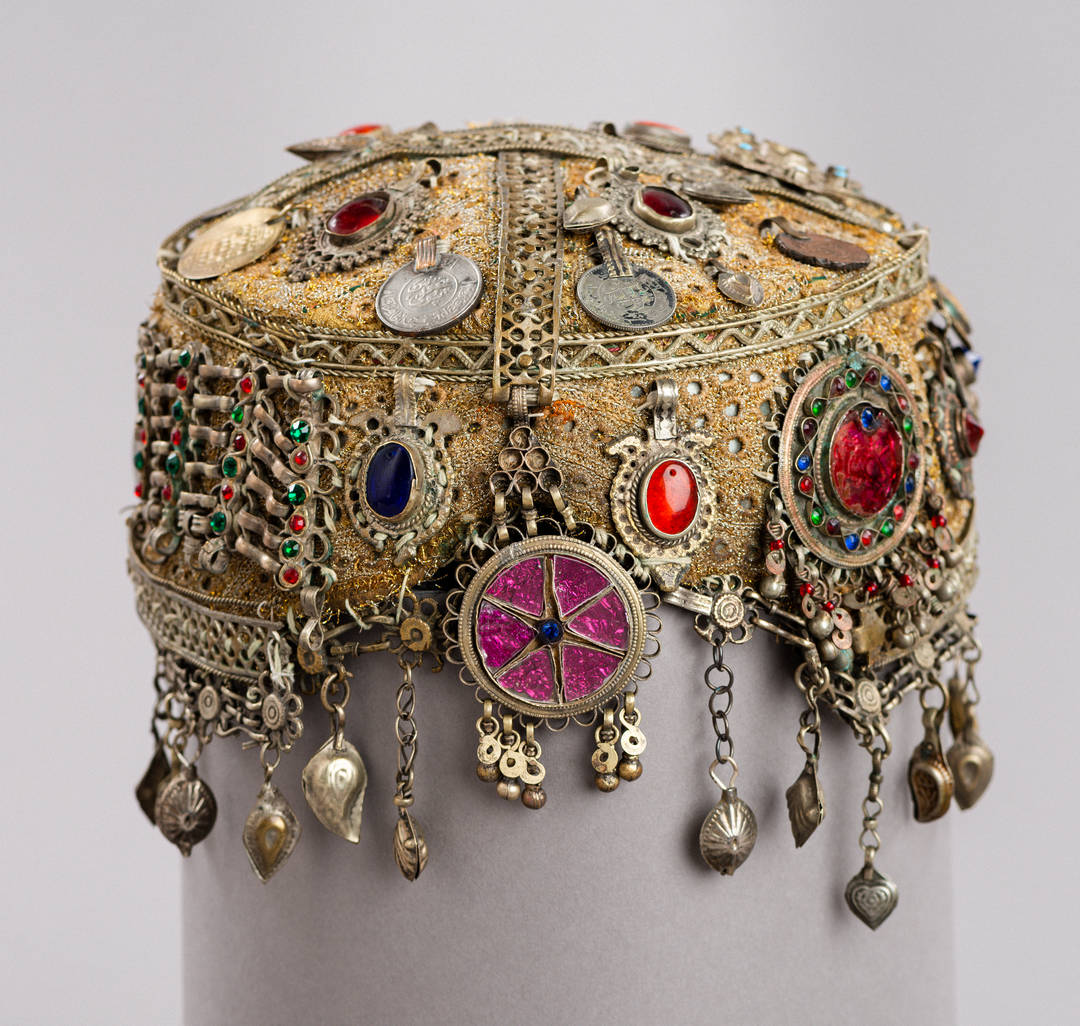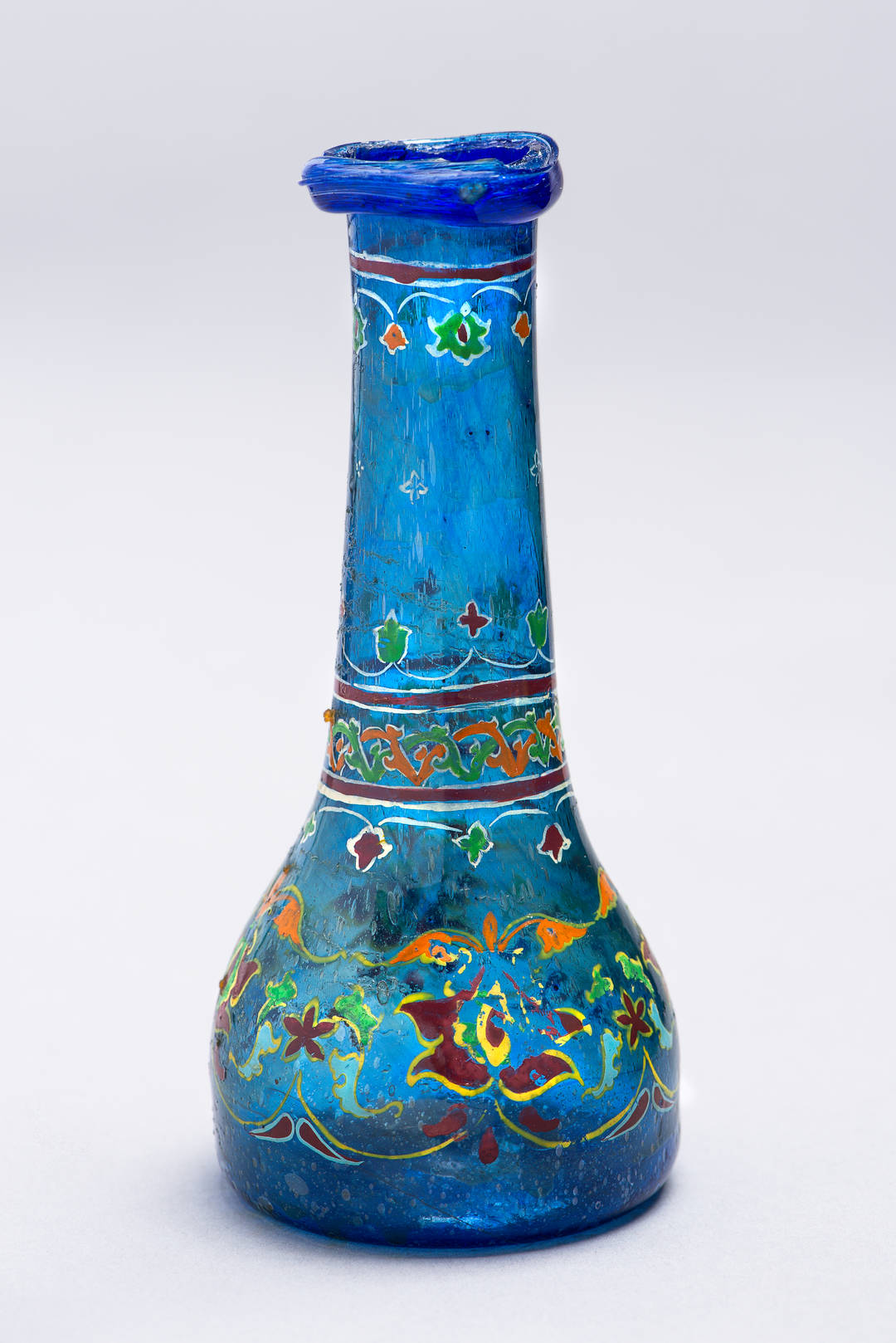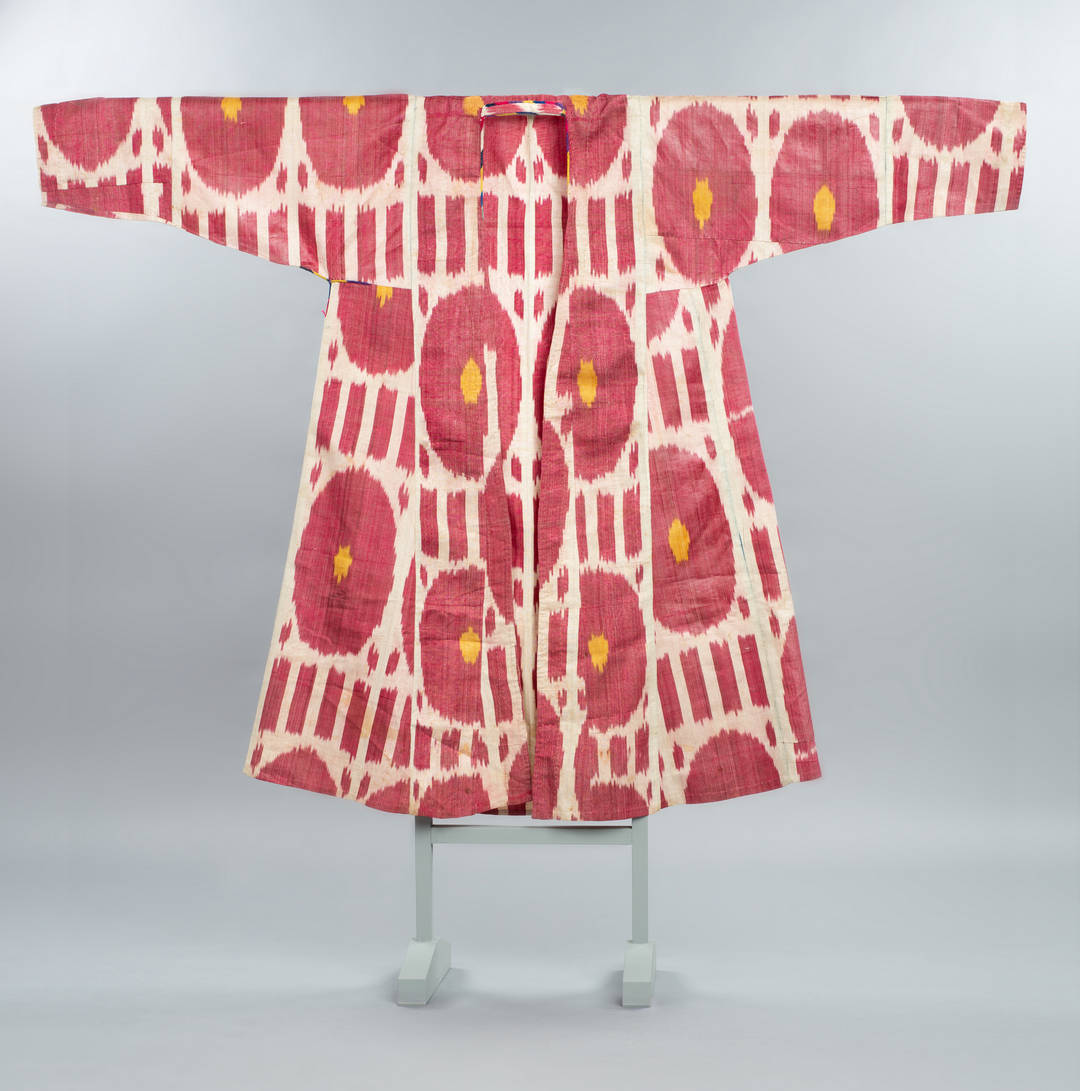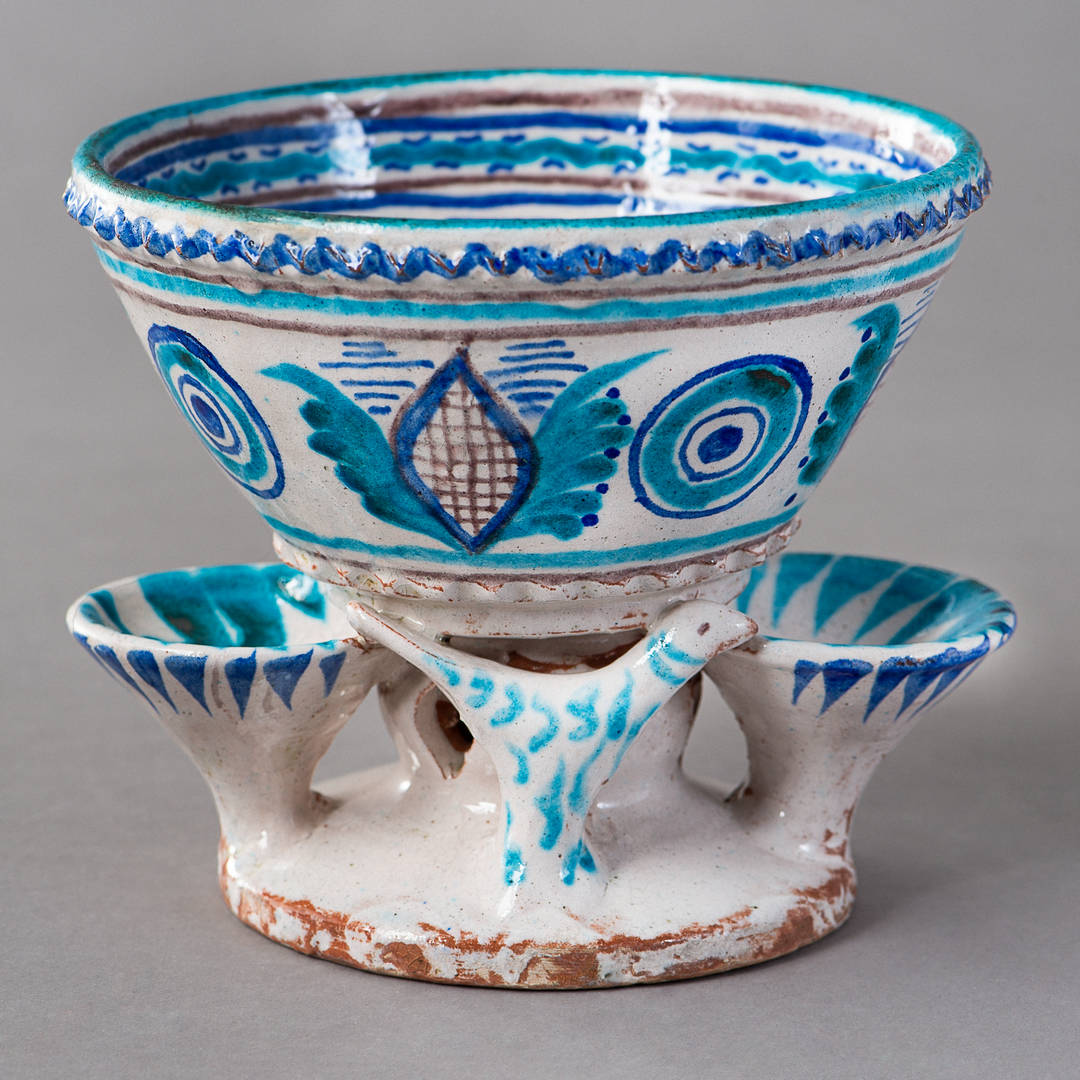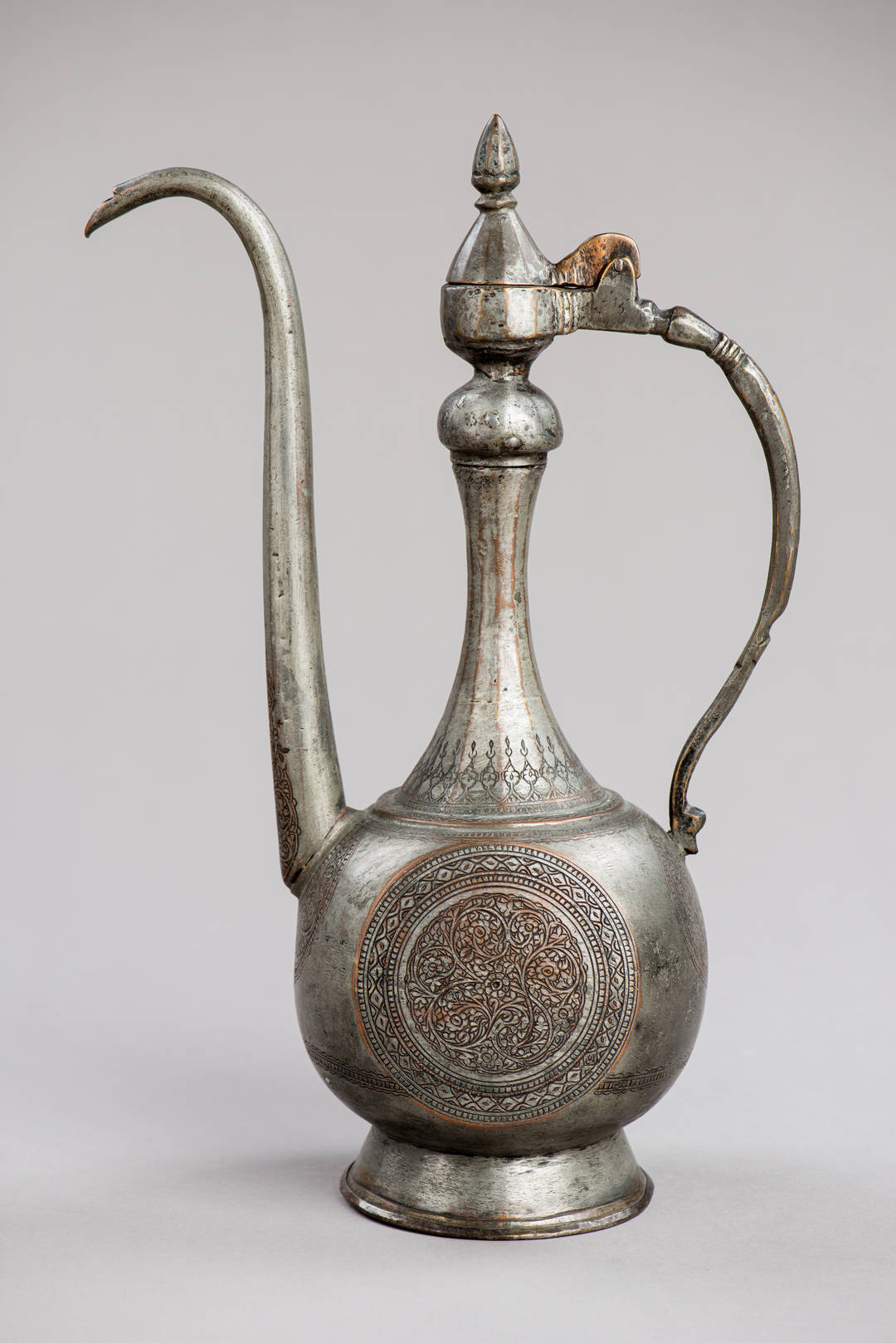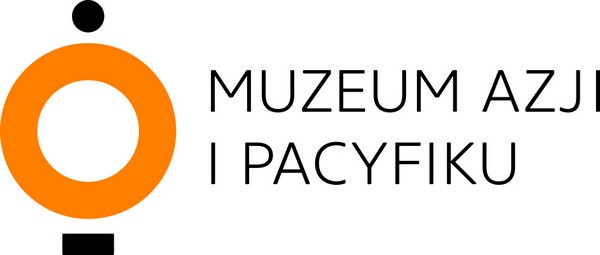Visit Central Asia
The second stop on the journey is a gallery dedicated to Central Asia, a region shaped by indigenous nomadic communities and well as Persian, Hellenic, Chinese, Arab, and Russian influences. It has also been a place where different religions intermingled: local shamanism, Buddhism, Zoroastrianism, and finally Sunni Islam.
The objects dazzle with their colours and ornamentation. You will find here handicraft of nomadic communities of Turkmenistan, textiles, Turkmen embroidery and carpets, felts from Kazachstan, Kyrgyzstan and Turkmenistan with distinguishable patterns in contrasting colours, various garments typically worn by the Kazakh, Kyrgyz, Turkmen and Afghan people (e.g. an elaborately adorned jumlo dress), as well as richly embroidered Uzbek clothes and tubeteika caps.
One of the most extraordinary items on display in the Central Asia gallery are embroidered suzani textiles, an important element of the shared heritage of the Uzbek and Tajik people. Their intense colours and elaborate floral patterns stand out against bright or purple backgrounds (examples include a beautiful ikat coat).
Under the arcades of a bazaar characteristic for the Muslim countries of Central Asia, visitors can marvel at a plethora of polychrome and glazed ceramic vessels, examples of the oldest handicraft still practiced in Uzbekistan and Tajikistan.
Apart from ceramics, the display also includes artefacts made from brass and bronze (e.g. an oftoba jug used for ceremonial ablution before praying) or splendid Herat glassware dazzling with its blue, turquoise, and green shades.

![grafika z tekstem [journeys to the east]](https://www.muzeumazji.pl/maip/uploads/2022/08/baner_strona_english_tn-1140x220.jpg)

